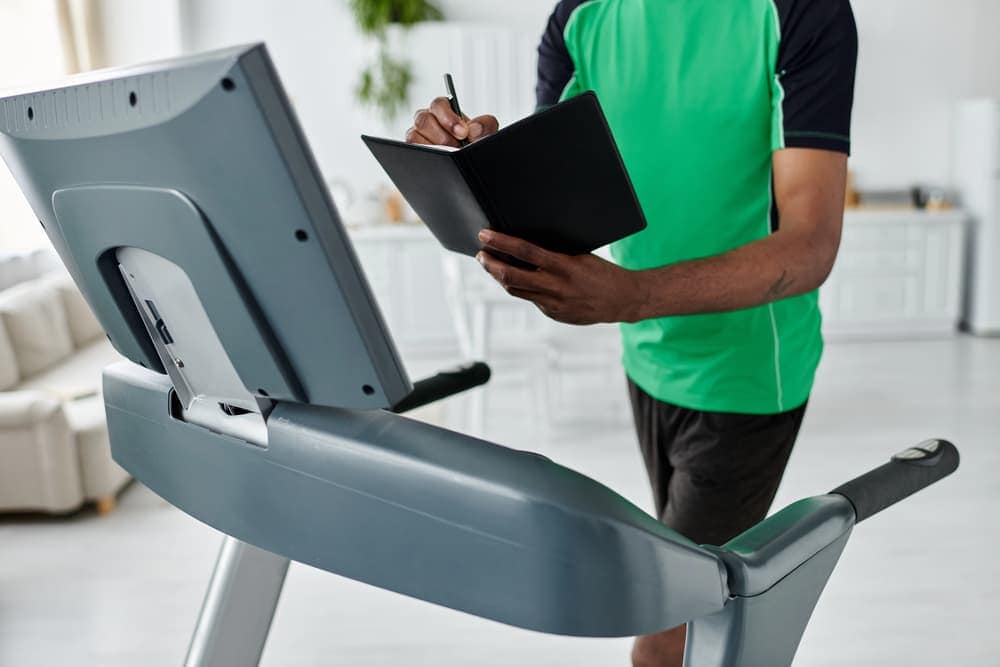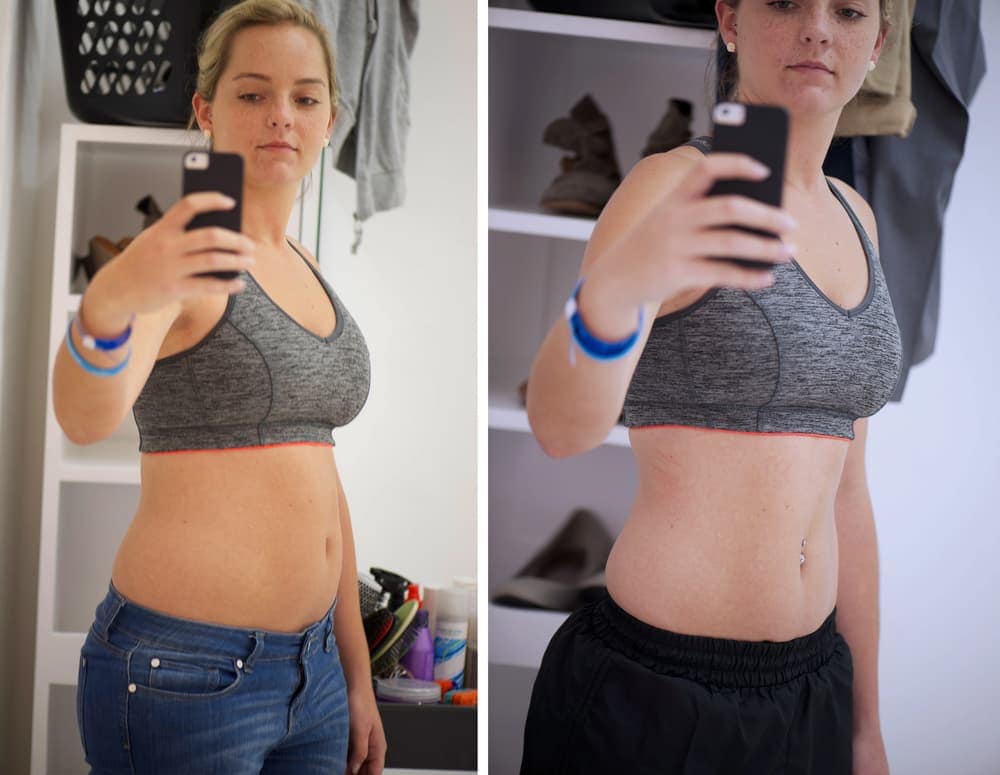In Australia, you can track fitness progress without a smartwatch using your phone, a journal, body measurements, performance tests, and even visual methods like progress photos.
These alternative tools often provide a more holistic view of your fitness, highlighting overall health rather than just numbers. They also offer a more personal, tangible experience.
In this article, we’ll explore journaling, measurements, performance tracking, and lifestyle indicators to help you measure real results.
1. Use Your Smartphone and Apps
You don’t need a smartwatch or wearable technology to track your fitness progress. Your smartphone can do a lot of the heavy lifting.
Modern phones have built-in motion sensors that accurately record steps, distance, and other activity data. Also, with the right apps, your phone becomes a full-on fitness partner.
Here are some ways to use it:
- Built-in apps: Apple Health (iPhone) and Google Fit (Android) automatically track steps, distance, and activity.
- Third-party apps: You can downloadMyFitnessPal, for example, for logging meals and workouts. Strava is excellent for running and cycling with GPS, while Jefit or FitNotes can track weights, sets, and reps.
- Timers and stopwatches: Use your phone’s timer or stopwatch to track runs, interval training, or rest breaks between sets.
By combining built-in tools with apps, your phone makes it easy to track progress, stay organised, and keep your fitness goals on track. Most modern exercise machines are also compatible with apps like iFit and Peloton, making it easier to track workouts.
2. Track with a Journal
A simple pen-and-paper journal is one of the most effective (and affordable) ways to track your fitness journey. It gives you structure, keeps you accountable, and provides a record you can look back on to see just how far you’ve come.
Here are some things you can track in your journal:
- Workout log: Exercises, sets, reps, weights, distance, time, and pace.
- Diet and hydration: Daily meals and water intake to spot eating patterns.
- Mood and energy: How you felt before, during, and after workouts.
Adding notes about your performance and mindset helps you see trends, celebrate wins, and adjust when needed. Reviewing your entries also makes it easier to apply progressive overload, gradually increasing weight, reps, or intensity, to keep improving.
Overall, journaling connects you more deeply to your goals, giving you a personal and tangible view of your fitness progress.

3. Take Body Measurements and Photos
When it comes to tracking fitness progress, a smartwatch doesn’t always tell the full story. Muscle weighs more than fat, so focusing on how your body changes in size and shape is often a better way to measure results.
A simple measuring tape and some consistency can give you a clearer picture of your progress. Here’s what to track:
- Key measurements: Chest, waist, hips, arms, and thighs every 2 to 4 weeks.
- Waist-to-hip ratio: Divide your waist measurement by your hip measurement. Aim for 0.9 or less (men) and 0.85 or less (women).
- Progress photos: Take front, side, and back photos every 4 to 6 weeks, keeping lighting, pose, and clothing consistent.
- Clothing fit: Notice if your jeans feel looser at the waist or your shirt fits more comfortably.
Body measurements and photos capture changes in body composition. They show where you’re gaining muscle, losing fat, and reshaping your body.
By checking in regularly, you’ll stay motivated and see the progress that might otherwise go unnoticed. Try using a digital smart scale for monitoring your fitness progress, too.
4. Conduct At-Home Fitness Tests
You don’t need a gym or fancy equipment to see how far you’ve come. At-home fitness tests give you a clear, measurable way to track improvements in strength, endurance, and flexibility. All you need is some space, a timer, and a bit of consistency.
Try these simple tests:
- Strength tests
- Push-up test: Count how many push-ups you can do in 60 seconds.
- Plank hold: Time how long you can hold a plank with proper form.
- Cardio endurance tests
- Step test: Step up and down on a 12-inch step for 3 minutes, then check how fast your heart rate recovers.
- Running test: Time yourself on the same route or distance every few weeks to track progress.
- Flexibility and balance tests
- Sit-and-reach: See how far past your toes you can reach while sitting.
- Balance test: Time how long you can stand on one leg.
These tests help you measure genuine progress in performance, not just appearance. Repeat them every few weeks, and you’ll clearly see how your strength, stamina, and mobility are improving.

Why Track Fitness Progress Without a Smartwatch?
Tracking your fitness doesn’t have to mean strapping on a smartwatch or staring at numbers all day.
Low-tech methods offer many benefits. They’re simple, affordable, and easy to stick with. Also, they help you stay mindful of your progress without relying on constant notifications.
When you track this way, you build a deeper sense of self-awareness. You notice how your body feels, how your clothes fit, and how your energy changes. These are actual signs of improvement that go beyond what a screen can tell you.
Best of all, tangible results, such as lifting heavier weights, running faster, or seeing changes in the mirror, are often more motivating than hitting a step count.
By focusing on these personal wins, you’ll feel more connected to your journey and more confident in your progress.
Track Your Progress the Simple Way
You don’t need a smartwatch or wearable tech to measure your progress. Tools like a journal, body measurements, and performance tests, can give you a fuller, more personal picture of your fitness journey.
These methods help you focus on how you feel, move, and grow, not just on numbers from a screen. The best part? They’re affordable, flexible, and easy to start.
Pick one or two methods that feel right for you and begin today. By tracking mindfully, you’ll stay motivated, see real results, and build a stronger connection to your health and fitness goals.
Related Questions
1. How can I track exercise bike workouts without a smartwatch?
You can track indoor cycling or exercise bike workouts without a smartwatch by using your phone’s timer or built-in health apps. You can also log the distance, time, and resistance levels in a journal. Recording how you feel after each ride also helps you see progress. For more tips, check out our guide to tracking exercise bike workout progress.
2. What body metrics can I track without a smart scale?
You can manually track key body metrics, like weight, body measurements (waist, hips, chest, arms, thighs), and body fat estimates, using tape measures or calipers. Then, pair these with notes on strength, energy, and nutrition in your journal to see a fuller picture of your progress. Check out our previous article on smart scale metrics to know more.
- Can Short Workouts Really Boost Daily Energy? - 28 October 2025
- How Can You Build a Balanced Plate for Every Meal? - 27 October 2025
- What Is a Yoga Wheel and How to Use It? - 29 September 2025
